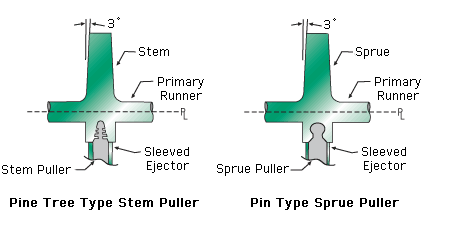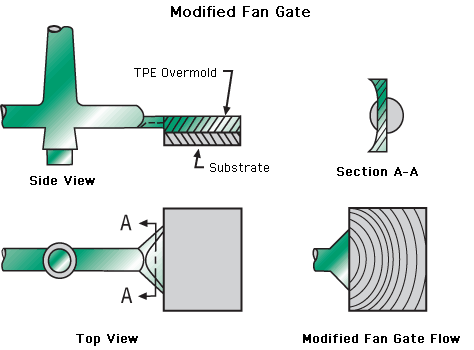Thermoplastic Elastomer Molding Guidelines:
Overmolding Design Considerations
| Typical TPE Hardness Range | Sprue Puller Type |
|---|---|
| >60 Shore A | 60 to 90 Shore A |
| Z-type, Conventional | Undercut, Pine Tree |

Gating Recommendations
- Gate at thickest TPE wall cross section
- Optimize gate type for part geometry and cosmetic component preferences
- Gate orientation to component wall should be customized
- Gates can be used in combination with added “flow” channels to insure minimal molded in stress
- A perpendicular gate (at 90° angle) to the melt flow – can cause “jetting” surface effect
- Need to consider exact gate location with respect to knit lines
- Oversized TPE gate(s) – will reduce shear rate in molten TPE flow. Utilize “steel safe” practices by starting small followed by gradual increases
Gating to Avoid
- Very long flow paths (greater than 200:1 L/T) should be avoided
- Avoid gating into thin cross-section of components
- Typically should not gate near core pins to minimize melt flow obstruction

Vents
- The purpose of venting is to evacuate all entrapped air in the runner system and part cavities.
- Adequate venting is most critical in complex and long length runner systems. Full peripheral venting is recommended – if not possible, vent at the end of fill directly opposite the gate.
- Vent Depth: 0.0005 to 0.0010 in (0.0127-0.0254 mm) deep – 0.00075 in (0.1905 mm) optimum.
- Land Length: Minimum 0.040 in (1.016 mm) where vent depth is cut.
- Depth of land (vent run out): >0.060 in (>1.524 mm)



